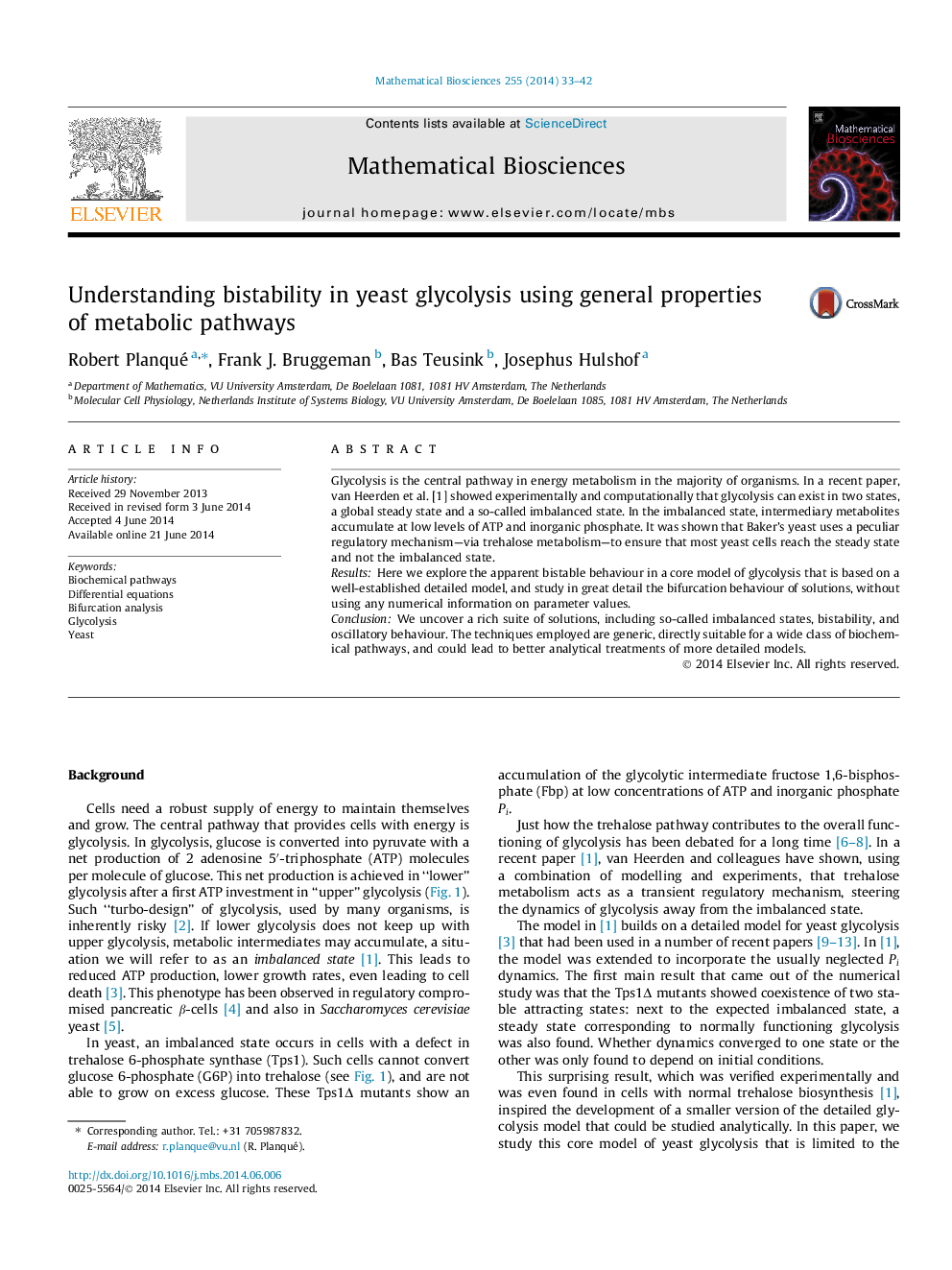| کد مقاله | کد نشریه | سال انتشار | مقاله انگلیسی | نسخه تمام متن |
|---|---|---|---|---|
| 4500059 | 1624025 | 2014 | 10 صفحه PDF | دانلود رایگان |
• We study analytically all known behaviours of glycolysis in one core model.
• The core model is based on a well-established model of yeast glycolysis.
• We focus on on bistability between regular and so-called imbalanced states.
• Techniques are widely applicable to biochemical pathways in general.
Glycolysis is the central pathway in energy metabolism in the majority of organisms. In a recent paper, van Heerden et al. [1] showed experimentally and computationally that glycolysis can exist in two states, a global steady state and a so-called imbalanced state. In the imbalanced state, intermediary metabolites accumulate at low levels of ATP and inorganic phosphate. It was shown that Baker’s yeast uses a peculiar regulatory mechanism—via trehalose metabolism—to ensure that most yeast cells reach the steady state and not the imbalanced state.ResultsHere we explore the apparent bistable behaviour in a core model of glycolysis that is based on a well-established detailed model, and study in great detail the bifurcation behaviour of solutions, without using any numerical information on parameter values.ConclusionWe uncover a rich suite of solutions, including so-called imbalanced states, bistability, and oscillatory behaviour. The techniques employed are generic, directly suitable for a wide class of biochemical pathways, and could lead to better analytical treatments of more detailed models.
Journal: Mathematical Biosciences - Volume 255, September 2014, Pages 33–42
